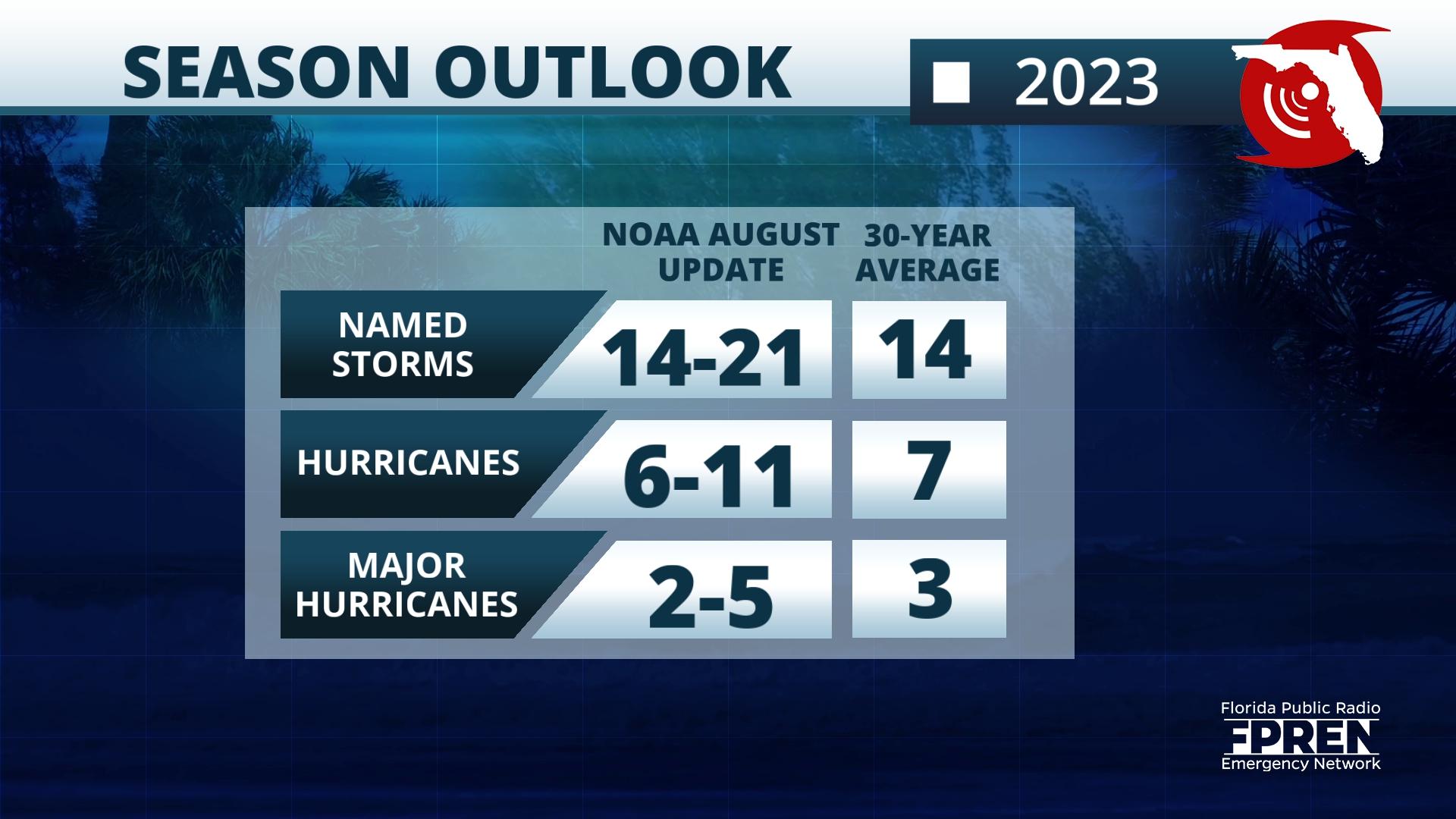This year’s hurricane season could be busier than we expected.
The National Oceanic and Atmospheric Administration this week updated its forecast for the 2023 season from from near-normal activity to above-normal.
Ocean and atmospheric conditions like record-warm Atlantic sea surface temperatures have the potential to counteract El Niño conditions. The original forecast issued in May predicted a 30% chance of above-normal conditions. Now, it stands at 60% as hurricane season moves through.
The outlook for 2023 calls for 14 to 21 storms with winds of 39 mph or greater. Six to 11 storms are predicted to be categorized as hurricanes, with two to five becoming major hurricanes with 111 mph winds or greater.
This update includes storms that have already formed this season. NOAA provides these ranges with 70% confidence.
“We’re urging you to prepare now for the upcoming quarter of the hurricane season, as a single storm can have catastrophic impacts,” NOAA lead hurricane season forecaster Matthew Rosencrans said. “Preparing now makes for a safer and more resilient community should a storm strike your area.”
The six-month hurricane season extends from June 1 through Nov. 30.
There is a 95% chance that El Niño will continue through the Northern Hemisphere winter, according to the Climate Prediction Center. El Niño typically results in atmospheric conditions that decrease tropical activity during the Atlantic hurricane season. Those conditions have been slow to develop this year, and climate scientists are predicting that the associated effects that limit storm activity may not be in place for the rest of the season.
Below-normal wind shear conditions, slightly below-normal Atlantic trade winds and near-or-above-normal West African Monsoon features are also shaping the updated seasonal forecast.
9(MDEwNzczMDA2MDEzNTg3ODA1MTAzZjYxNg004))






